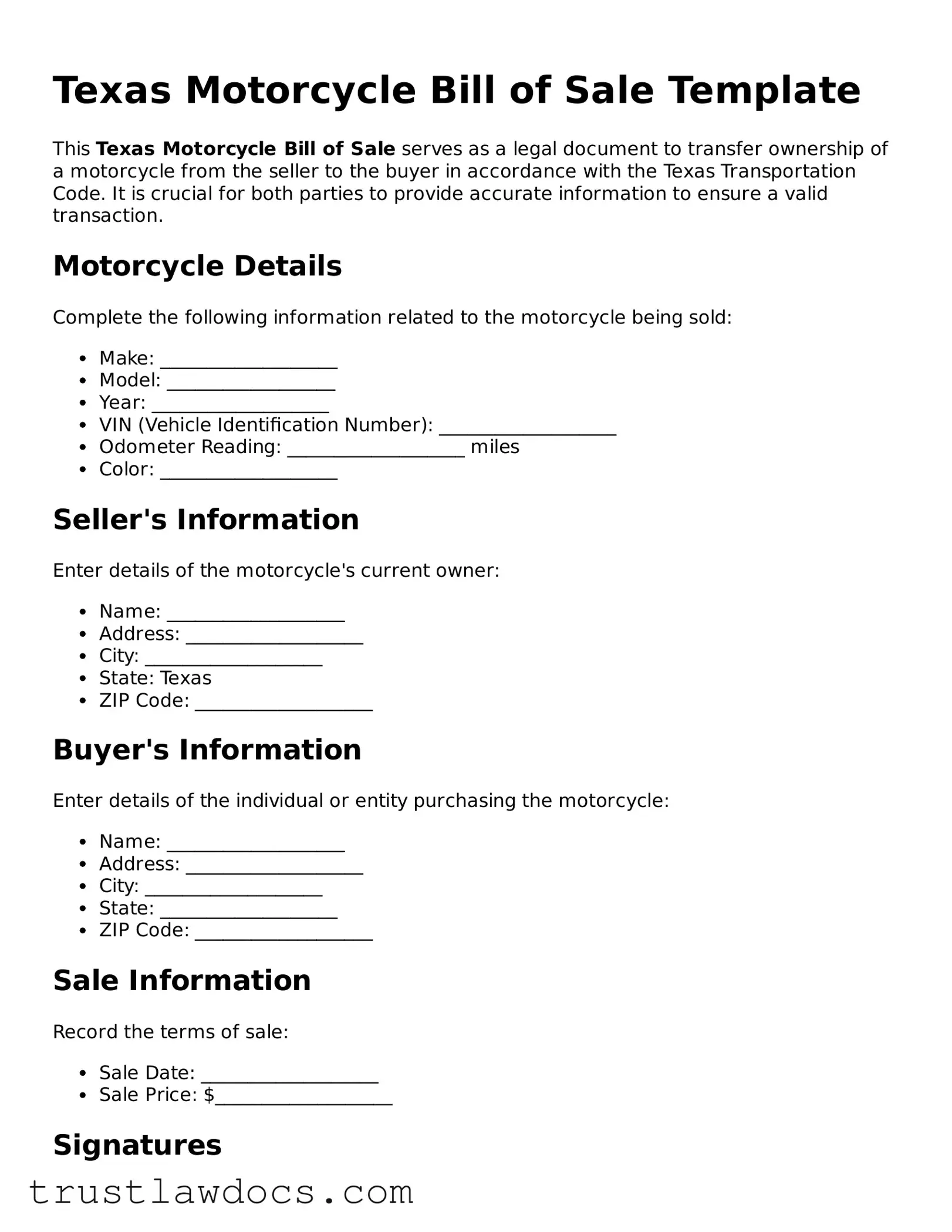What is a Texas Motorcycle Bill of Sale?
A Texas Motorcycle Bill of Sale is a legal document that records the sale and transfer of ownership of a motorcycle from a seller to a buyer in the state of Texas. It serves as proof of purchase and can be used for registration and titling purposes.
Why do I need a Motorcycle Bill of Sale in Texas?
In Texas, a Motorcycle Bill of Sale is crucial for several reasons. It legally documents the transaction, providing evidence of the change in ownership. For the buyer, it’s necessary for registering the motorcycle and proving ownership. For the seller, it offers protection by confirming that the motorcycle was legally sold and transferred to someone else.
What information should be included in a Texas Motorcycle Bill of Sale?
A comprehensive Texas Motorcycle Bill of Sale should include the date of sale, names and addresses of the seller and buyer, motorcycle description (make, model, year, VIN), sale price, signatures of both parties, and any additional terms or conditions of the sale.
Is notarization required for a Motorcycle Bill of Sale in Texas?
No, notarization is not a requirement for a Motorcycle Bill of Sale to be legally binding in Texas. However, getting the document notarized can add an extra layer of legality and protection for both parties involved in the transaction.
Can I use a generic Bill of Sale for a motorcycle sale in Texas?
Yes, a generic Bill of Sale can be used for motorcycle transactions in Texas, as long as it contains all the necessary information to prove ownership and details of the sale. However, using a specific Motorcycle Bill of Sale form is recommended to ensure all relevant information is covered.
How do I obtain a Texas Motorcycle Bill of Sale form?
A Texas Motorcycle Bill of Sale form can be downloaded from various online legal resource sites or obtained from the Texas Department of Motor Vehicles (DMV). Ensure you use a current form to include all required legal terms and conditions.
Does a Motorcycle Bill of Sale have to be filled out in ink?
While filling out the Texas Motorcycle Bill of Sale in ink is not a legal requirement, it is highly recommended to prevent alterations. Using blue or black ink ensures that the document maintains its integrity and is easily legible.
What happens if you lose your Motorcycle Bill of Sale?
If you lose your Motorcycle Bill of Sale, it’s recommended to contact the other party involved in the transaction and try to obtain a copy. If that’s not possible, drafting a new document with the same information and dates, and having both parties sign it again, is advisable. Keeping digital copies can prevent loss.
Can a Texas Motorcycle Bill of Sale be used for motorcycles purchased out of state?
Yes, a Texas Motorcycle Bill of Sale can be used for motorcycles purchased out of state, as long as it fulfills the requirements for proving ownership and the transaction details in Texas. However, additional documentation may be required by the Texas DMV for motorcycles coming from out of state.
